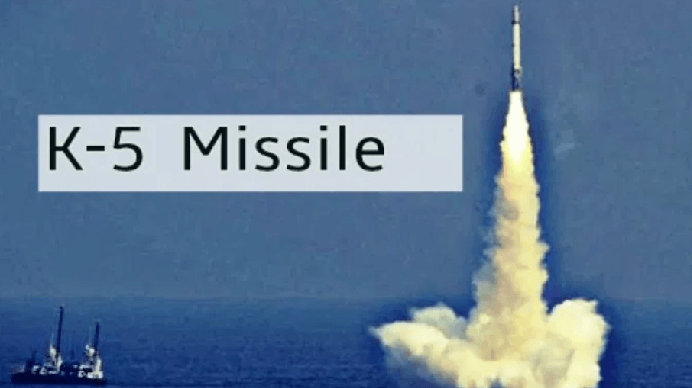The completion of the successful deterrence patrol of the indigenous INS Arihant in November 2018 marked a new era for India’s nuclear defence capabilities. The development marked the completion of the establishment of India’s nuclear triad – the ability to launch a nuclear offensive from land, air and sea.
While the country already possessed the surface-launched ballistic missiles and fighter-bombers, the lack of an underwater nuclear offensive capability for long remained an Achilles’ heel for India.
However, the commissioning of the nuclear-capable INS Arihant was only the first step towards establishing a dominant position in all three domains. India will need the deployment of at least three SSBNs at a time to act as a credible deterrence against the enemy.
While the government has sanctioned six SSBNs, only one remains operational till date. And powered with a limited capacity of an 83-megawatt nuclear power plant, INS Arihant has a short refuelling cycle and, therefore, we cannot expect much from the submarine when it comes to speed and endurance.
INS Arighat, second SSBN to be deployed after Arihant, is expected to bolster such capabilities and carry a higher payload of weapons in its belly.
It’s stated that an SSBN is as good as its offensive capabilities. Since India arrived late in the arena of submarine nuclear offensive, it lacks effective and long-range SLBMs.
The K-family of SLBMs has made tremendous progress in recent years. Having developed and successfully tested K-15 and K-4 missiles, Defence Research and Development Organisation (DRDO) is reportedly already working on developing the longer-range K-5 and K-6 SLBMs, slated to reach distances of more than 5000 and 6000 km, respectively.

While the country’s only SSBN Arihant is already armed with K-15 missiles, which have a range of 750 km, K-4 (3500 km) is yet to be deployed on the submarine.
According to reports, DRDO is making progress in the development of the K-5 missile, which India hopes to deploy on the future Arihant class of submarines. The missile is reportedly about to be tested in the next 15 months, which if successful will add to the long-sought capability for India – the ability to hit targets from longer distances.
The successful development of the K-5 missile will place India in the list of select few countries having such capability and take it closer to the goal of establishment of a credible nuclear triad.
The current SLBM deployed on INS Arihant, K-15, has a number of limitations, and won’t promise a reliable second response in the event of a war. Its limited range of 750 km means the submarine will have to be deployed close enough to the borders of a country it aims to target.
China, for example, is a vast country, and to be able to strike at the key strategic targets, the missile needs to have a longer range. Besides, operating at closer ranges increases the vulnerability of the submarine itself from enemy retaliatory strikes. Therefore, the addition of K-5 missiles in India’s nuclear arsenal is a dire necessity.
Both Pakistan and China are also reportedly bolstering their underwater nuclear offensive capabilities, with the latter helping the former with its arsenal fortification. Pakistan’s Babur-3 submarine-launched cruise missile is in advanced stages of development and will arm the country’s three Agosta 90B submarines.
While China is currently developing the second generation ballistic missile submarines, armed with JL-2 SLBMs. The country is in an advanced stage of developing the longer-range JL-3 SLBM. All the three regional nuclear-armed nations are increasingly focusing on a second strike capability, a domain which remained without activity until two decades ago.
All the three nations are rightly realising the importance of the undersea capabilities, especially nuclear assets, and their efficacy in ensuring a decisive advantage in the event of a war. While the undersea nuclear capabilities of Pakistan are still at a nascent stage, China has gained a decisive edge over India with over four operational SSBNs, with reports of two more having joined the fleet.
K-Family Of Missiles
India started the K-series of SLBMs to boost its undersea nuclear deterrence, and has since years been tremendously successful with the programme code-named ‘Black Project.’
The K-family of missiles have better and lighter rocket casings, advanced guidance systems ensuring accuracy and efficacy of missile strikes. The missiles are designed in a way to fly depressed trajectories enabling stealth entry into enemy territories.
DRDO claims the missiles are faster, lighter and stealthier. With a capacity to carry a 2-tonne payload (four multiple independently targetable reentry vehicle (MIRV) warheads of 500 kgs each), the K-5 SLBM has the capacity to hit higher than its usual range of 5000 km.
To build a formidable undersea nuclear capability, India will need to speed up its SLBM programme, especially the K-5 and K-6 missiles which have the capacity to hit targets further than 5000 km. And with more SSBNs joining the Indian Navy, India will need more firepower to add teeth to the fleet.
India has also been prioritising the nuclear-powered submarine programme, with over Rs one lakh crore sanctioned in 2015. The project involves building advanced nuclear submarines with long-range underwater patrol capacity, the design phase of which has reportedly witnessed significant progress.
However, the road for India to becoming a true blue water navy could hit roadblocks with a number of economic and political challenges for the BJP-led government on the horizon. The military modernisation requires the employment of colossal capital, and with India’s GDP recording unprecedented contraction there could be a lull in the funding for new projects.
The good news is the country has seen an unprecedented level of indigenisation in the defence sector in recent years. The domestic production could reduce costs and prevent further delays in the unfinished products. On the innovation front, the country’s premier defence research institute, DRDO, seems to be learning from its mistakes and delivering cutting-edge capabilities to the Indian armed forces in recent years.




